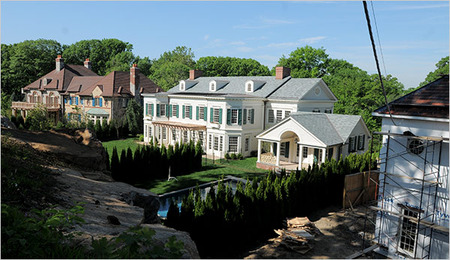When it comes to new homes, bigger is again better. The median size of new homes built for sale peaked in 2007 at 2,295 square feet, then fell to 2,159 two years later, after the housing crisis hit.
When it comes to new homes, bigger is again better. The median size of new homes built for sale peaked in 2007 at 2,295 square feet, then fell to 2,159 two years later, after the housing crisis hit. But the appetite for ever-larger homes has returned: In 2012, new homes reached a new peak of 2,384 square feet and, according to the National Association of Home Builders, some 41 percent of new homes had four or more bedrooms, up from 34 percent in 2009.
"The housing market is being driven by the move-up buyer, the luxury buyer," said Brad Hunter, chief economist and director of consulting at Metrostudy. "And those who have strong incomes, secure jobs, their stock portfolio is doing well -- they are able to buy whatever they want. And what they are buying is larger houses."
